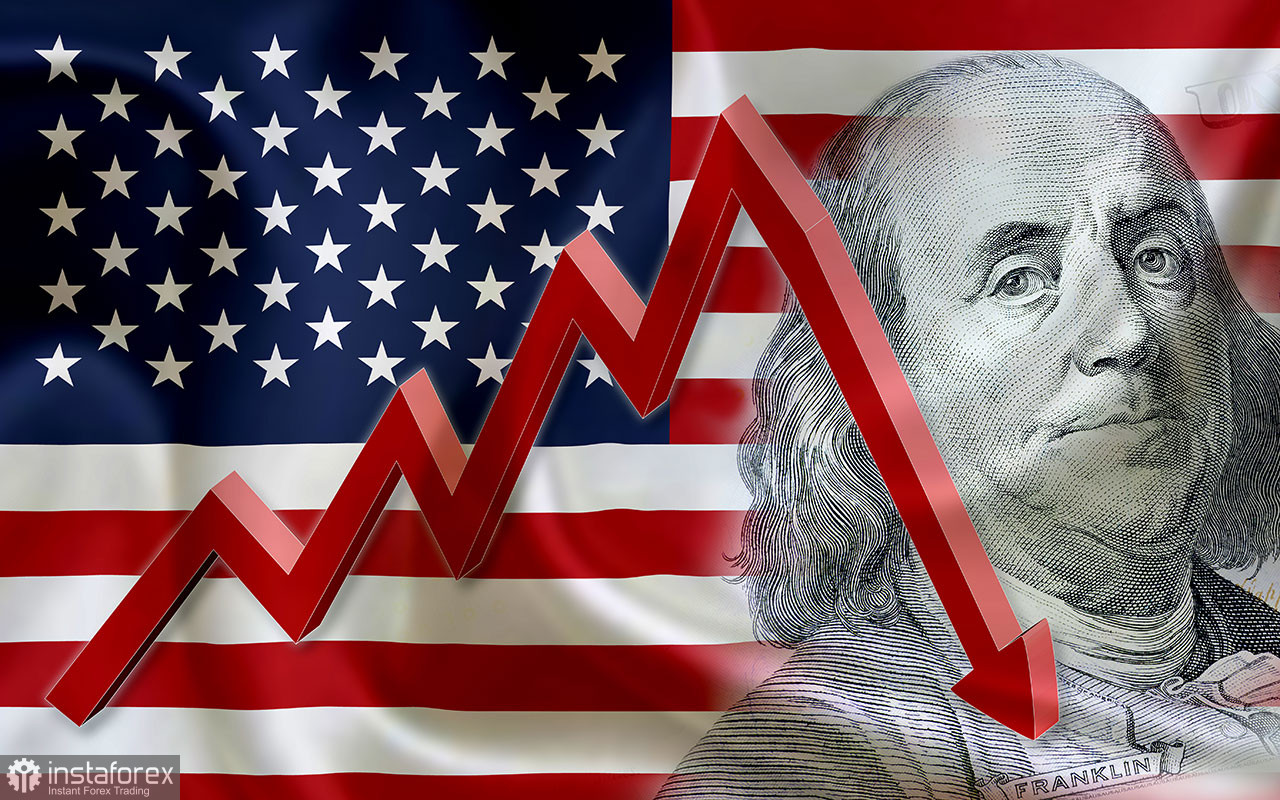
The situation is moving toward a temporary end to the "shutdown," but what does this bode for the dollar? At first glance, everything seems fine. The "shutdown" is coming to an end, the economy will stop losing billions of dollars, and government employees will start receiving their salaries. But is everything so clear-cut?
It should be noted that the dollar has felt quite good throughout the "shutdown," so I would not expect a new strengthening from it now. However, further deductions allow for the possibility of a serious decline in the American currency.
First, the wave analysis still indicates that an upward trend section is being built. The U.S. dollar has exceeded its correction plan and has confused market participants, but even in this case, its long-term prospects have not improved. Second, in the past month and a half, we haven't seen many important reports in the U.S., and the dollar may have been in demand based on the logical chain of "no news – no negativity – no problems." Now, if the "shutdown" ends for at least a few months, we will find out how many new jobs were created in the non-farm sector in September and October.
Let me remind you that market participants could only rely on the ADP report. The overall trend is clear – the market is facing problems. But how serious are these problems? According to the ADP report, about 40,000 new jobs were created in October, which is very low for a country as large and influential as the U.S. Therefore, in my opinion, the payroll data for September and October are unlikely to please traders. The same applies to the unemployment rate, which may have only been exacerbated by the "shutdown," as it is unlikely that all government employees in the U.S. who did not receive salaries for a month and a half remained in their positions. Consequently, the unemployment rate may have increased over the last two months.

The September inflation report was delayed but eventually released, while questions remain about the October data. Nonetheless, inflation is rising in the U.S., whether quickly or slowly. A reduction in the Fed's interest rate is a stimulating factor for the consumer price index. In other words, inflation is more likely to increase when the Fed's rate is low. Therefore, after two rounds of monetary policy easing, I would expect inflation to rise.
The FOMC committee remains dependent on the state of the labor market, so it may implement a third consecutive round of easing in December, which would further worsen the situation with inflation. In other words, high inflation will not deter the Fed from lowering rates if the labor market remains weak. And in a few months, when inflation accelerates further, the Fed is unlikely to raise rates, as that could cause a "heart attack" for Trump.
Wave Analysis for EUR/USD:
Based on the conducted analysis of EUR/USD, I conclude that the instrument continues to build an upward section of the trend. Over the past few months, the market has paused, but Donald Trump's policies and the Federal Reserve remain significant factors in the future decline of the American currency. The targets of the current trend section may extend to the 25th figure. At present, construction of correction wave 4 is ongoing, taking on a very complex, elongated shape. Its latest internal structure – a-b-c-d-e – is close to completion or has already been completed. Therefore, I am once again considering buying with targets positioned around the 19th figure.
Wave Analysis for GBP/USD:
The wave picture for the GBP/USD instrument has changed. We continue to deal with an upward, impulsive section of the trend, but its internal wave structure is becoming more complex. Wave 4 has taken a three-wave form, and its structure is becoming very elongated. The bearish corrective structure a-b-c-d-e in c in 4 is presumably approaching completion. I expect the primary wave structure to resume its build with initial targets around the 38 and 40 figures.
Key Principles of My Analysis:
- Wave structures should be simple and understandable. Complex structures are difficult to trade successfully and often lead to changes.
- If there is no confidence in what is happening in the market, it is better not to enter it.
- There is never 100% certainty in the direction of movement. Always remember to use protective stop-loss orders.
- Wave analysis can be combined with other types of analysis and trading strategies.
 English
English 
 Русский
Русский Bahasa Indonesia
Bahasa Indonesia Bahasa Malay
Bahasa Malay ไทย
ไทย Español
Español Deutsch
Deutsch Български
Български Français
Français Tiếng Việt
Tiếng Việt 中文
中文 বাংলা
বাংলা हिन्दी
हिन्दी Čeština
Čeština Українська
Українська Română
Română


